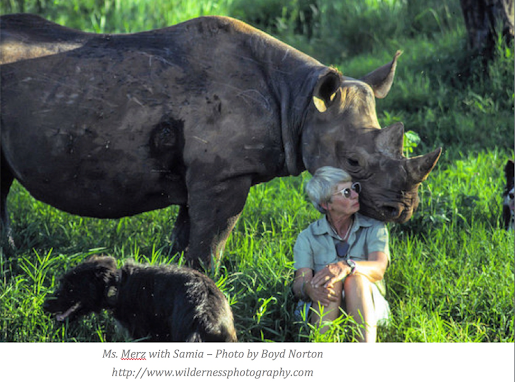By Peggy Thomas
Today, we're talking to nonfiction author Deb Aronson.
Deb lives in the Chicago area and writes lively articles for academic institutions and other nonprofits, but her true passion is sharing with children stories about ordinary people doing extraordinary things. She's the author of ALEXANDRA THE GREAT: THE STORY OF THE RECORD-BREAKING FILLY WHO RULED THE RACETRACK, which Deb describes as a "girl power" story even if the girl in question has four legs and hooves! Deb is a network representative for the Society of Children's Book Writers and Illustrators (SCBWI), and her newest nonfiction title comes out in May from Bedazzled Ink.
Q: Hi Deb! Could you tell us about your newest book, and what sparked the idea?
A: My newest book is titled, HOW TO RAISE A RHINO and it is
a biography of a woman named Anna Merz. Anna retired from Ghana to Kenya,
discovered that black rhinos were almost extinct and created a sanctuary for them.
Along the way she raised an infant rhino to adulthood, which involved both
hilarity and heartbreak.
I first learned about Anna by reading her obituary (she died in 2013). It was accompanied by this photograph by Boyd Norton. Wouldn’t that catch your imagination?! I thought her story would appeal to MG readers.
Q: What was your research process like?
A: First, I googled. I read every obituary and news article I
could find. Although she wasn’t “famous famous,” Anna was well known and respected
and so many news outlets and web sites had stories about her. In the course of
that work I found her god daughter, who she was very close to, as well as the
founder of Rhino Resource Center (Kees Rookmaker), to whom she had donated all
her journals. He scanned many pages and shared them with me. Anna also had
written two books about her life and adventures, which I found and read. I
traveled to England to meet her god daughter (Naomi Campbell but not the super
model) and a couple other people who knew her. They pointed me to more people,
including the American Association of Zoo Keepers (AAZK), which hosts special
trips to the sanctuary for zoo keepers, and a few others. Next thing I knew, I
was on a trip to Kenya, to the actual sanctuary, together with several people
who had known Anna. I met more people there at the sanctuary, including both
several trackers and Ian Craig, on whose land the sanctuary was established.
Q: Why did you choose to write this book for the mid-grade market?
A: The middle grade market is a catchall between picture books
and YA. You have early independent readers who have conquered chapter books, as
well as readers who are just about to launch into the YA world. That is a vast
range of readers, and that makes it a very important phase. I was a strong
reader growing up but never found biographies of ordinary people to read. It
was only people like Marie Curie, whose life was hard and tragic and driven,
which made her feel like an impossible role model.
To show readers at this level the kinds of lives people can make for themselves, if they have imagination and passion, is what gets me out of bed in the morning.
Q: What is the most difficult part of the writing process for you, and how do you get through it?
A: The hardest part for me is logistical — keeping track of all
the pieces and parts of my research and of my drafts and worrying that I’ve
lost track of some critical piece of information. I’ve tried apps like Evernote
but I have yet to figure out a really good systematic way that prevents me from
often throwing up my hands at the disarray, especially because I have learned I
do best with old-fashioned pen and paper systems. I have come to accept that the
only way around this struggle is through. In addition, my beloved critique
group friends helped keep me going, as did putting the manuscript away for a
while.
Q: What did this project teach you about yourself or your writing process?
A: Well, I never thought about this, but looking back I think
I’ve discovered that I am more persistent than I’ve given myself credit for. This
book idea was born in 2013, when Anna died. It took about four years to
research and write it. Then I found an agent and she had it for about two
years. Despite one close call she found no buyers. We parted ways, I went back
to trying to sell it. I often wanted to give up, but instead I made a
spreadsheet of potential agents and publishers, realized I hadn’t reached out
to as many as I thought and kept going. I also want to mention here that I
wouldn’t have gotten this far without my critique partners.
Q: What are you working on next?
A: I have an almost complete biography of African-American lawyer, civil rights activist, poet and Episcopalian priest, Pauli Murray. This has been a real act of love for me because I have several personal, though somewhat loose, connections to Dr. Murray, who has been recognized, among other things, as an early transgender advocate.
Thanks Deb!
Check out Deb Aronson's website, and follow her on Twitter, Facebook, and Instagram.










